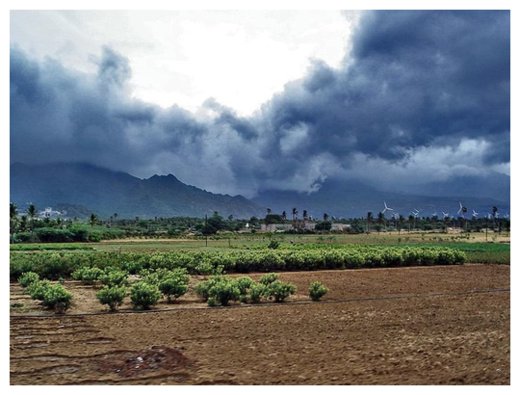
© Wikimedia CommonsAdvancing monsoon clouds and showers in Aralvaimozhy, near Nagercoil, India.
India's monsoon is in no danger of catastrophic collapse in response to global warming and air pollution, two atmospheric scientists said today, refuting earlier predictions that the monsoon could shut down within 100 years.
The scientists at Yale University in the US who used computers to model the Earth's atmosphere, land and oceans have found that the expected changes in the monsoon will not abruptly alter their strength or their water volume.
Their results contradict earlier forecasts by scientists at the Potsdam Institute for Climate Impact Research in Germany portending frequent and severe failures and even a breakdown of the monsoon, which is critical to India's food, water resources and economy."Our models show that monsoon rainfall will change smoothly in response to rising greenhouse gas concentrations, air pollution, and changes in land use," William Boos, an associate professor at Yale University told
The Telegraph."We should expect changes in the monsoon rainfall in response to changes in the global mean temperature in the coming decades, but there is no reason to expect those changes to be abrupt," Boos said.
The earlier modelling exercises had predicted that the monsoon, under the influence of global warming and air pollution, would experience a "tipping point" that would lead to a sharp drop in rainfall over India.
Boos and his colleague Trude Storelvmo
have now shown that the theory and models that were used to predict such "tipping points" had omitted a key term in climate behaviour, ignoring the fact that air cools as it rises in the atmosphere.The scientists described their results this week in the
Proceedings of the National Academy of Sciences, a US research journal.
Their corrected models have suggested that while the monsoon is expected to change over the next century,
there is no reason to fear an abrupt shift that will push India into a dry regime over the next century or two.Many Indian scientists who had been sceptical about the earlier predictions are happy with the results from the Yale researchers. "A lot of hype had been generated over the earlier predictions about abrupt changes to the monsoon, causing concern among policy makers," Jayaraman Srinivasan, a professor at the Indian Institute of Science, Bangalore, who was not associated with the work, told
The Telegraph.Concerns about the future of the monsoon under human-driven factors date back to a computer simulation by Indian scientists in 1995 that had suggested that increasing sulfate and dust particles in the atmosphere might weaken the monsoon.
In 2002, Veerabhadran Ramanathan and his colleagues at the University of California, San Diego, had argued that soot could cause a decline in monsoon rainfall, a prediction challenged by some scientists who in turn suggested that soot would enhance rainfall.
A decade ago, a study by Potsdam Institute researchers suggested that increasing air pollution and forest loss could lead to a sharp reduction in rainfall within a span of decades. And three years ago, another study from the Potsdam Institute predicted a 40 to 70 per cent reduction in rainfall.
While such forecasts appear grim, scientists say they are not something impossible.
"Rainfall during the monsoon is higher in the Bay of Bengal than in central India," Srinivasan said. Hence, a small eastward shift in the monsoon system can reduce the rainfall over western or northwestern India, he added.
Climate scientists have already observed an increase in the frequency of extreme weather events over India, which, they believe, are linked to global warming. The Yale study suggests that even amid long-term changes in the monsoon patterns, normal year-to-year variability will occur.
"India is often dry during El Nino years," Boos said in a media release, referring to a subtle warming of the Pacific sea surface temperatures that have been associated with poor monsoon rainfall. "So even if Indian monsoon rainfall gradually increases over the next century, there will very likely be unusually dry years that occur occasionally."
Reader Comments
to our Newsletter